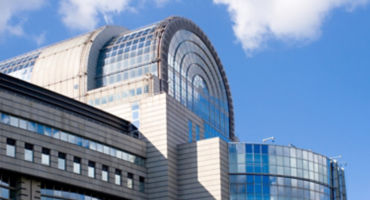Where are the opportunities and risks?
Against this backdrop, there are a number of areas I think are attractive. Let me highlight two:
- Defence equipment manufacturers — For years, defence manufacturers in Europe struggled as countries across the region underspent on defence. But over the past few years, defence budgets have gradually risen. This began with a push from the US under President Trump to increase defence budgets in the region closer to 2% of GDP, but it truly accelerated in 2022 after the Russian invasion of Ukraine. And importantly for defence companies, most of the increased spending is focused on manufactured equipment, as opposed to more troops. I think this change should lead to stronger earnings and growth in what may be a multi-year process.
- European banks — I think certain banks in Europe are attractive, and that hasn’t changed as a result of the recent turmoil in the US and European banking markets. In terms of what distinguishes the more attractive opportunities, they have low valuations as a starting point. Many of them went through difficult times during the global financial crisis and subsequent years. They have had to clean up their balance sheets and have faced a variety of new government restrictions in terms of lending practices, which I think helped them to avoid bad decisions and end up in a healthier place today. As a result, there are now the green shoots of improving growth and ROEs. Some banks are also overcapitalized, giving them the option to return money to shareholders.
Along with these potential opportunities, there are also areas where there will likely be an ample number of losers. Two examples, in my view, are the property and REITs markets in Germany and Sweden — two markets that would generally be considered fairly conservative, but where, for a variety of reasons, some companies have increased their debt pile in recent years and now find themselves in a precarious position.
There are, of course, broader risks in the region that we must consider. One is the possibility that we end up back in an environment similar to late 2020, including a return to very low interest rates. It’s also important to be alert to the potential for a big surprise in inflation, to the upside or the downside. Lastly, the recent energy crisis is worth considering, and in particular the potential fallout if we were to see a significant expansion of the war in Ukraine.
The bottom line is that Europe is a place where we have historically seen a great deal of bifurcation between winners and losers — across countries, sectors, and the region as a whole. In recent years, that changed as a smaller set of companies, particularly in technology, dominated, but I expect a return to a more diverse market with a very different level of dispersion going forward. Whenever the stocks that drive dispersion change, opportunities are abundant.











